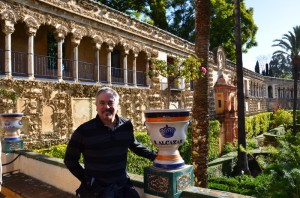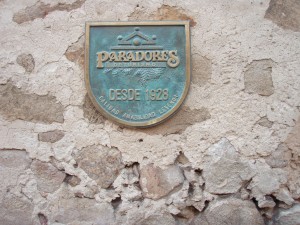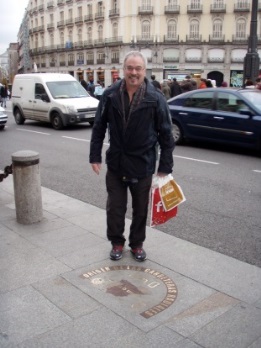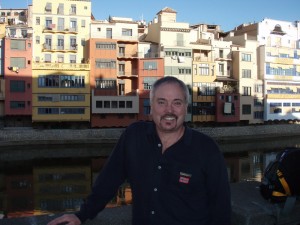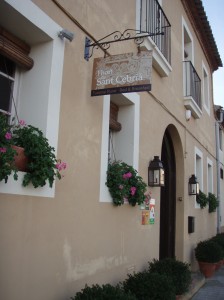A Special Journey to Medieval in Spain (See My Blogs!)
Travel in Spain is first of all, easy! The train can take you to most places in the country easily and fast. However there are special places where you just need a car. Extremadura is one of those places. This would be a place you could visit on your way to Cordoba/Seville/Granada. Extremadura is a state that lies southwest of Madrid along the border with Portugal. It is ideal for nature lovers and those who want to get off the beaten track and discover old Spain. It offers beautiful drives, ancient sites from Roman times (and before!), wonderful nature preserves, the Templar towns in the Sierra Morena and the wonderful Mideval towns of Caceres, Trujillo, Merida and Guadalupe. You will need a minimum of 4 to 5 days to do this special part of Spain justice. I suggest starting out from Madrid (it is only about 2.5 hours of easy driving on one of the main highways (the A-5) get off the freeway and drive south towards Guadalupe but make a stop a Bohonal de Ibor and see the magnificent Roman Ruins that stand above the lake. In Guadalupe you will find the huge Monastary founded in the 14th century. In 1496 the monastary was the site of the baptism of some of the first native Caribbeans brought to Europe by Columbus. The Hospederia Monasterio is now a wonderful and comfortable hotel and rivals the Paradore so there are two great places to stay and explore this town.
Visit my Blogs for Spain: http://wp.me/P3CFgs-1
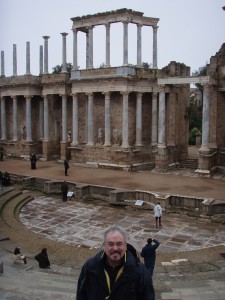
The Roman ruins at Merida
Moving on westward you will find the town of Merida, just 127 km away. This was one of the most important towns of Roman Spain. Founded in 25 BC by Augustus, Merida was the cultural and economic capital of Rome’s most western province. There are many things to see in this town among them are: the Roman theatre, one of the best preserved in Europe, the amphitheatre and gardens, the incredible Roman bridge across the Rio Guadiana along with the aqueducts and my favorite is the Museo Nacional de Arte Romano. This museum is built within ruins and is of a modern design. It displays the rich archaelogical treasures of the area. Sculpture, mosaic, and excavations. There is a wonderful Paradore to stay that was an 18th century convent.
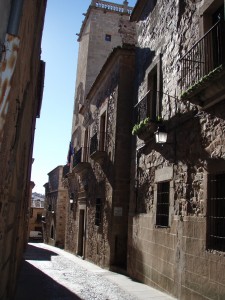
The Medieval Parador at Caceres, Spain
Moving on to Caceres, just 66km you find a wonderful town of towers, palaces and stately homes. This Renaissance town dates from the 15th and 16th centuries. Caceres has been untouched by war so you will find a preserved city. Easy to walk in and enjoy the sites. There are several grand museums and ancient churches. The town is a delight to just get lost in. The Paradore is located just down from the San Mateo Church and is in a 14th centgury palace, but the inside is totally modern. Very comfortable and a great location.
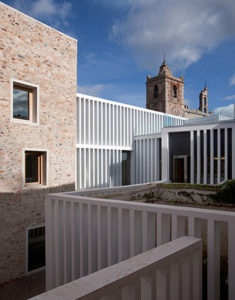
The ultra modern Atrio Hotel in Caceres, with its Michelin starred restaurant.
Next door is the famed restaurant (2 Michelin Stars**) and hotel Atrio. This restaurant is a desintation in itself for many “foodies” from around the world. The creators of this place Tono and Jose are the real deal. They have created a wonderful hotel and restaurant. It is upscale and expensive and worth every Euro! The wine cellar is said to be the best in all of Spain. I was a guest for lunch that lasted from 3pm to 6pm. It was truly an experience of a lifetime.
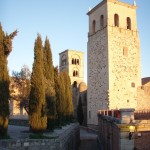
Ancient bell towers
Trujillo, Spain
OK so from Caceres head north and east to Trujillo, 40 km away. This is the town of the Conquistadores. Orellana, Paredes and most famous Pizarro. The town is built on a hillside with a big castle on top. The main plaza, the Plaza Mayor is one of the most beautiful in Spain. It is huge with a big statue of Pizarro on is horse in the middle. There are lots of things to explore here including a small museum that was Pizarro’s home and of course the Castillo bilt in the 9th century by the Moors. Trujillo is a great place to explore Extremadura. The Paradore in Trujillo is a former 16th century convent with two cloisters. The dining room specializes in the wonderful ham that comes from those pigs who only eat acrons their entire lives! It is 43 km to Monfrague Natural Park which is a wildlife preserve and the best place to see the famous Griffen Vultures. along the way se rolling hills of ancient oak trees with pigs eatin the acorns that fall down for them to feast on. From Trujillo you can head south to Cordoba or head back to Madrid. Or you can continue west to Portufal The pace is slow here in this section of Spain. This is relaxed Spain at its best. The people are friendly, it is not overly touristy and the countryside is delightful. Viva Espana!
